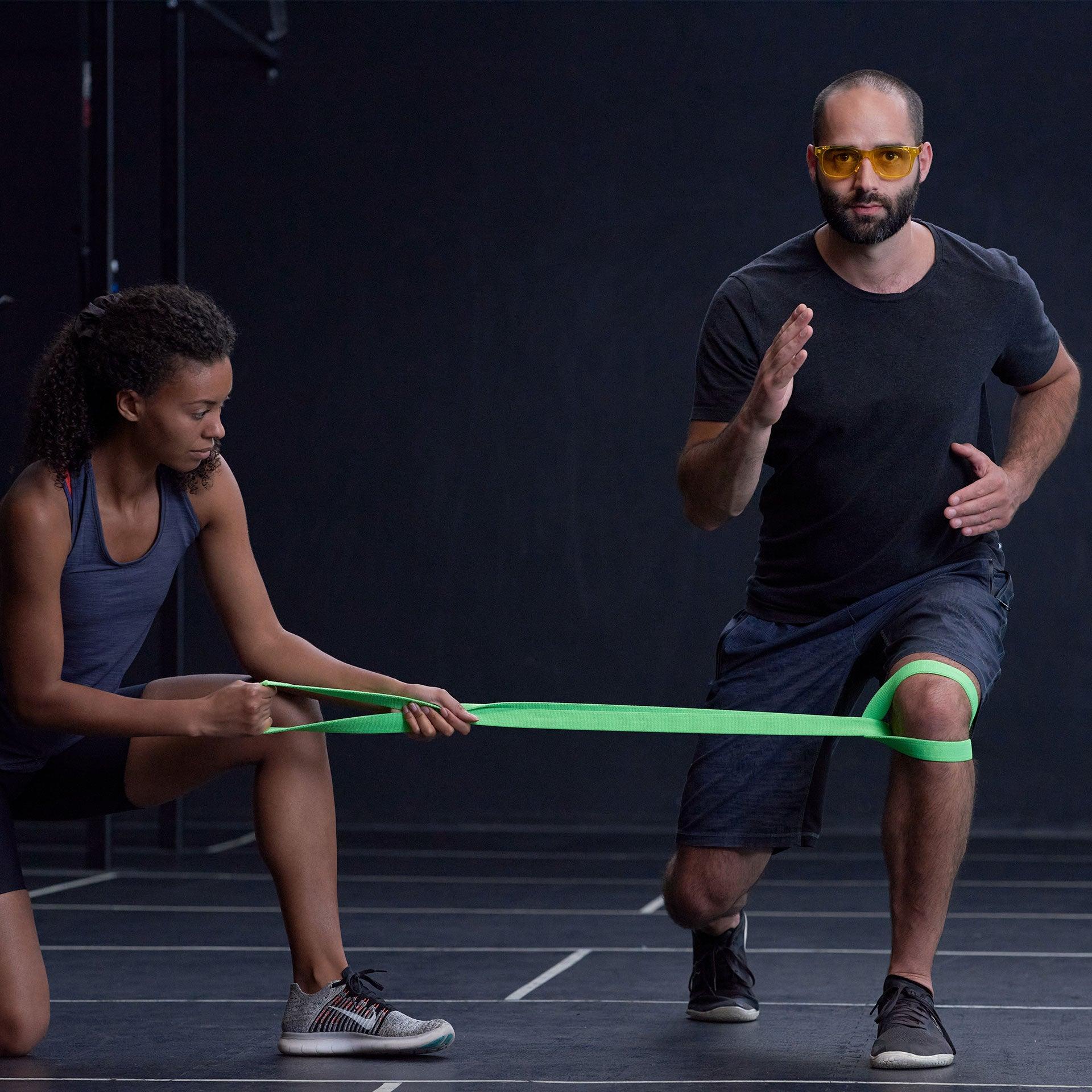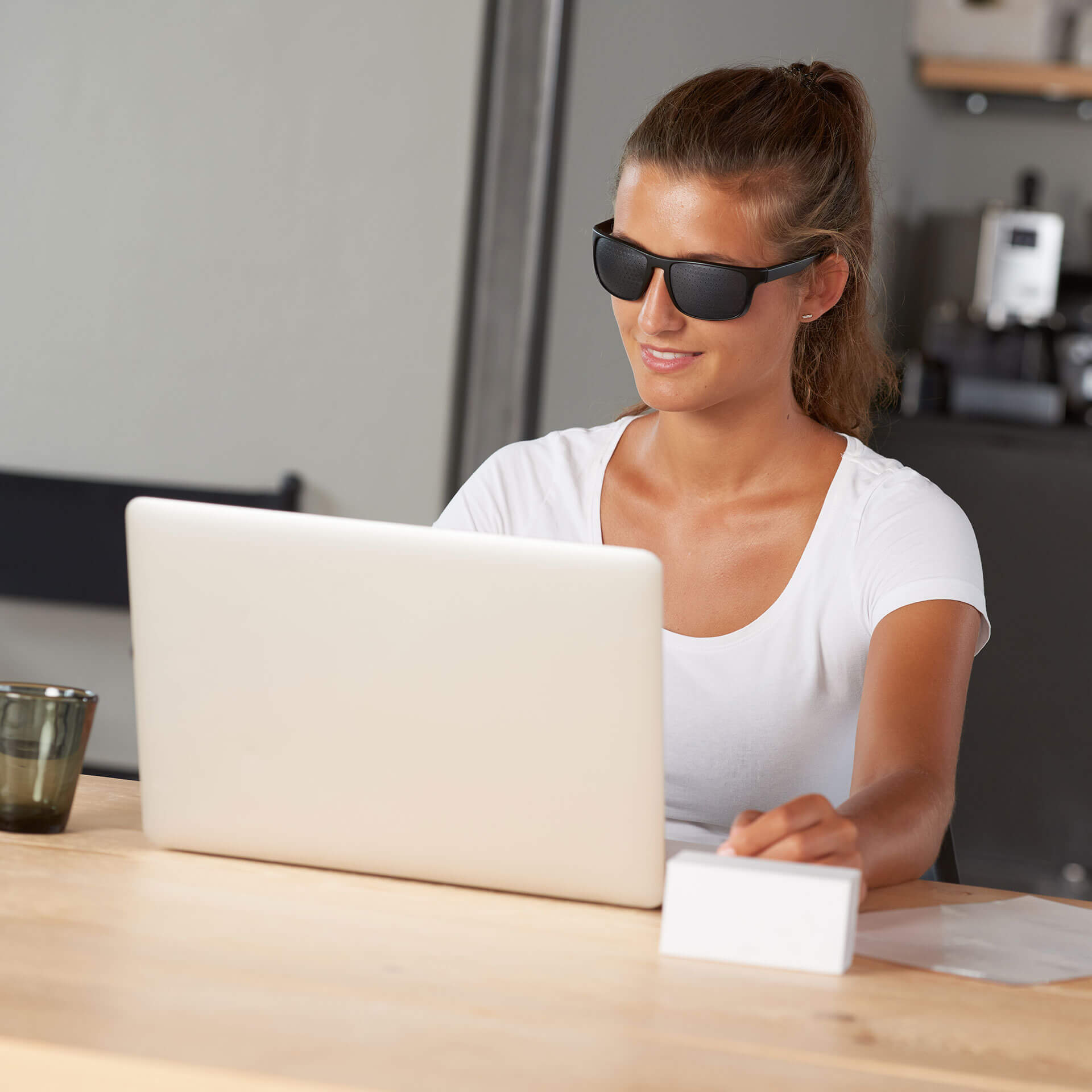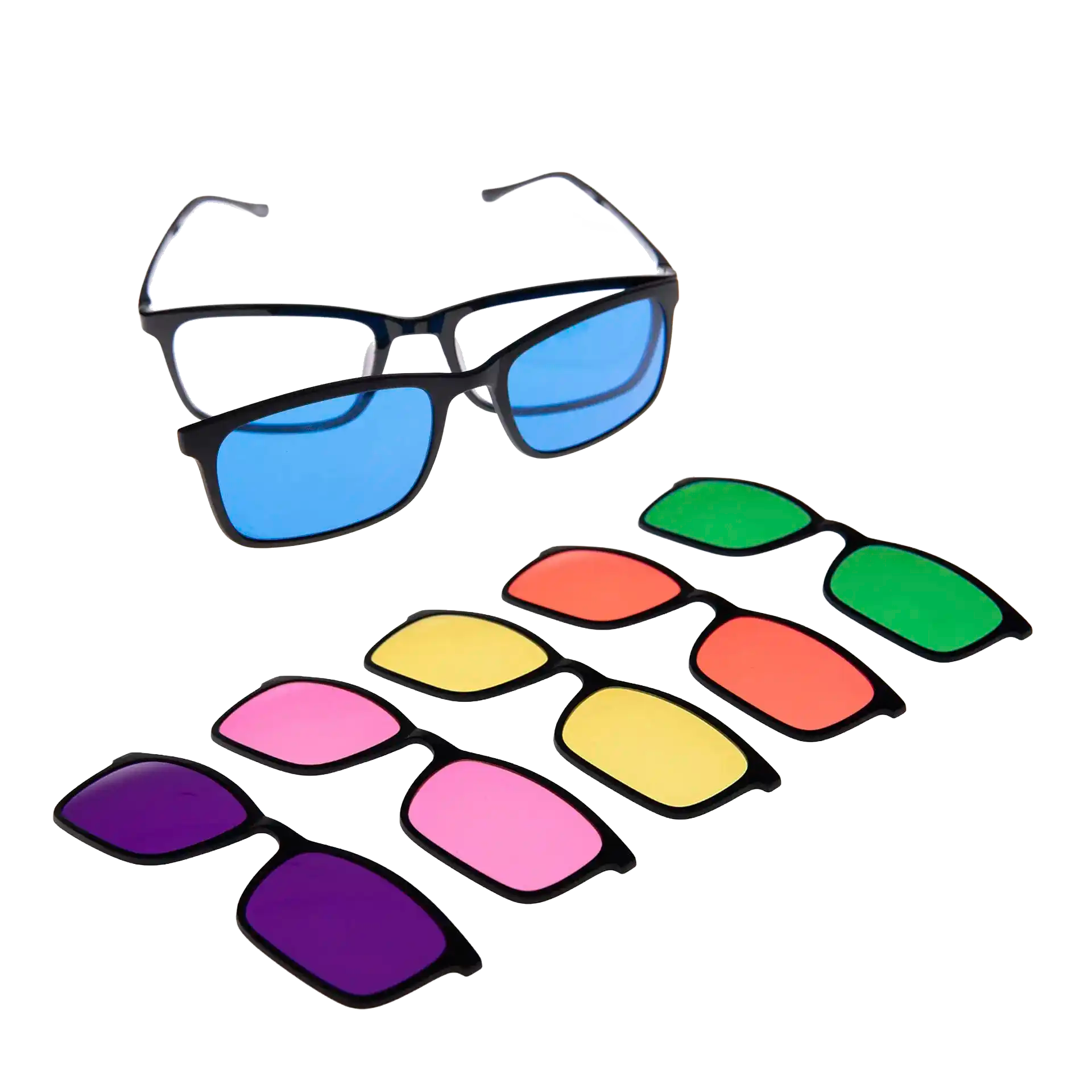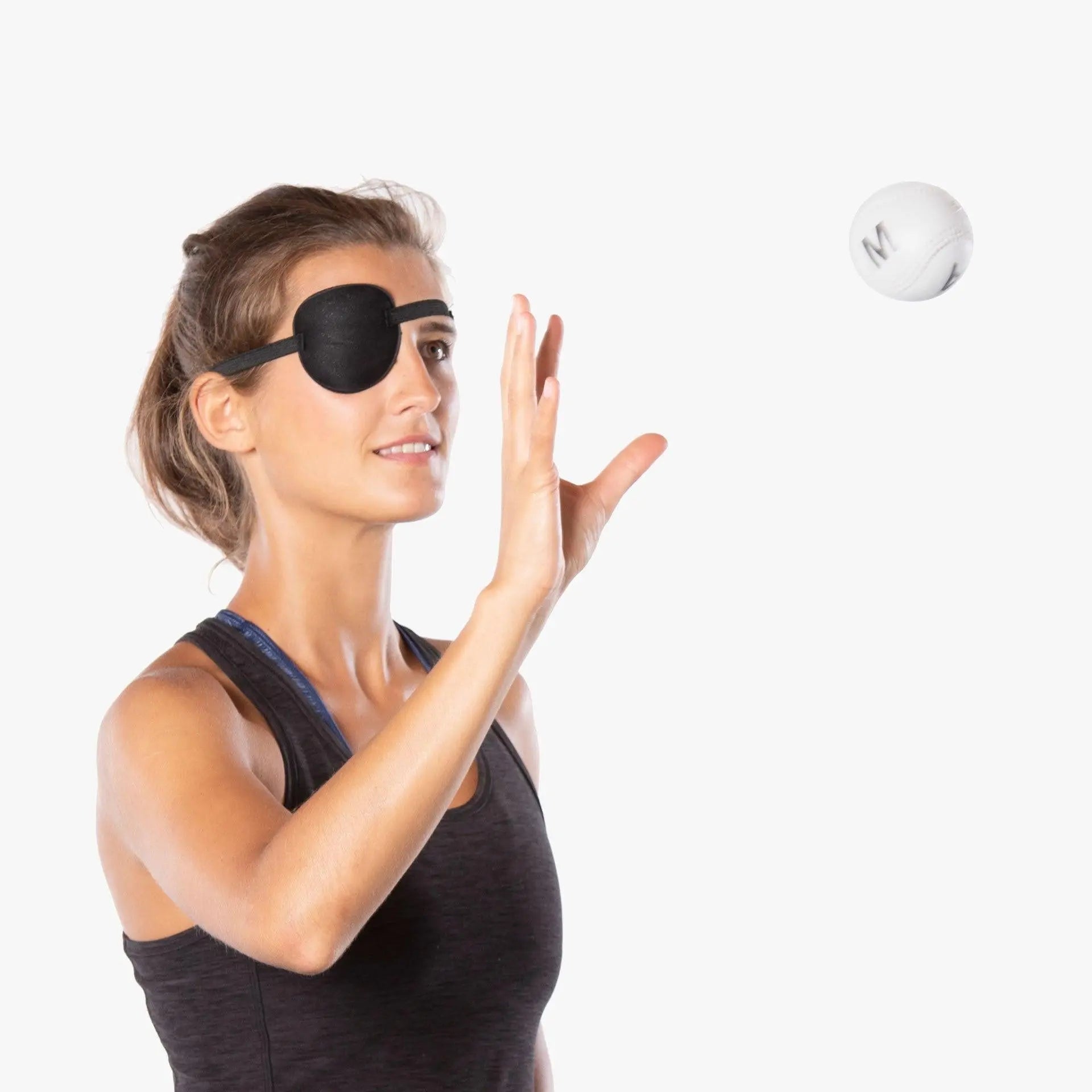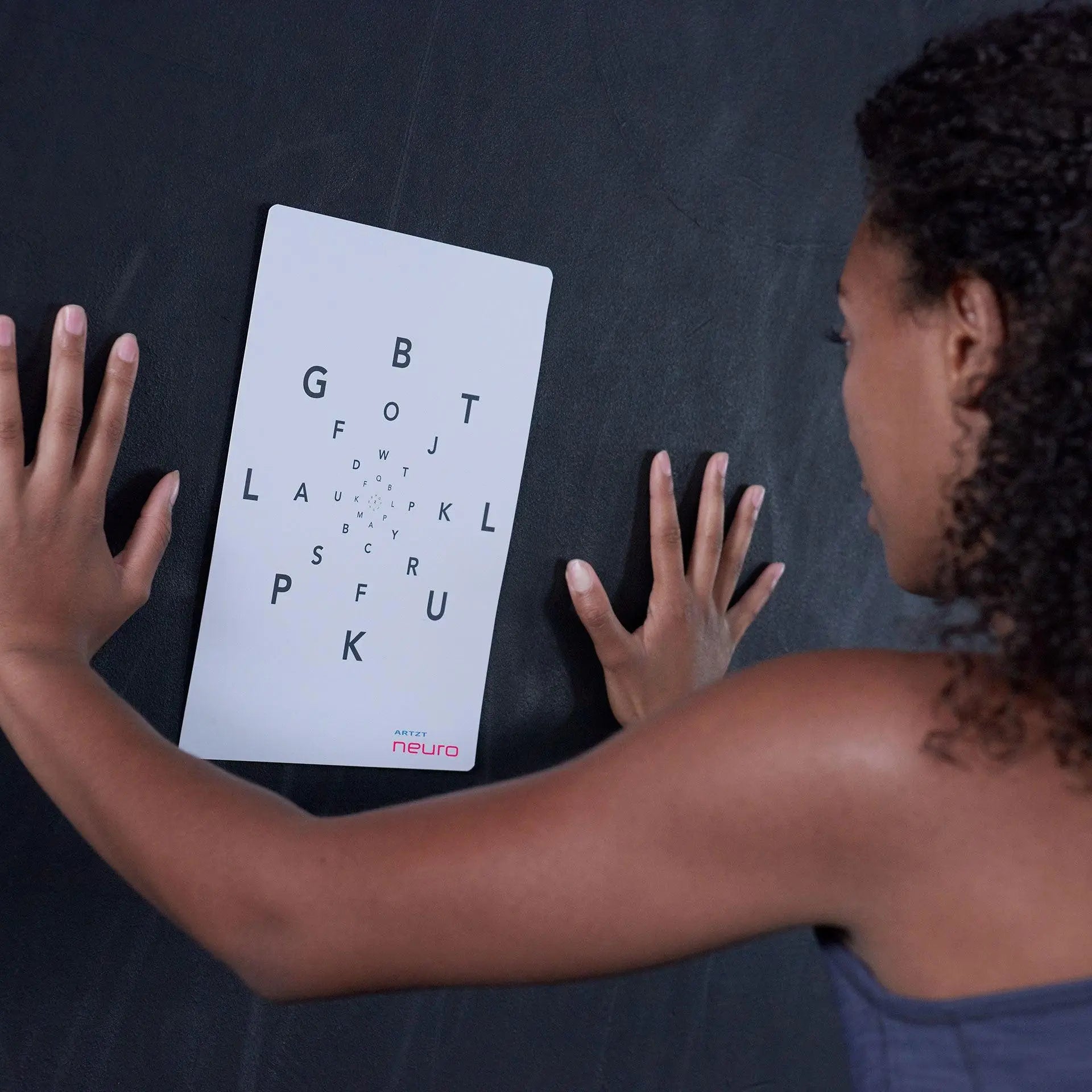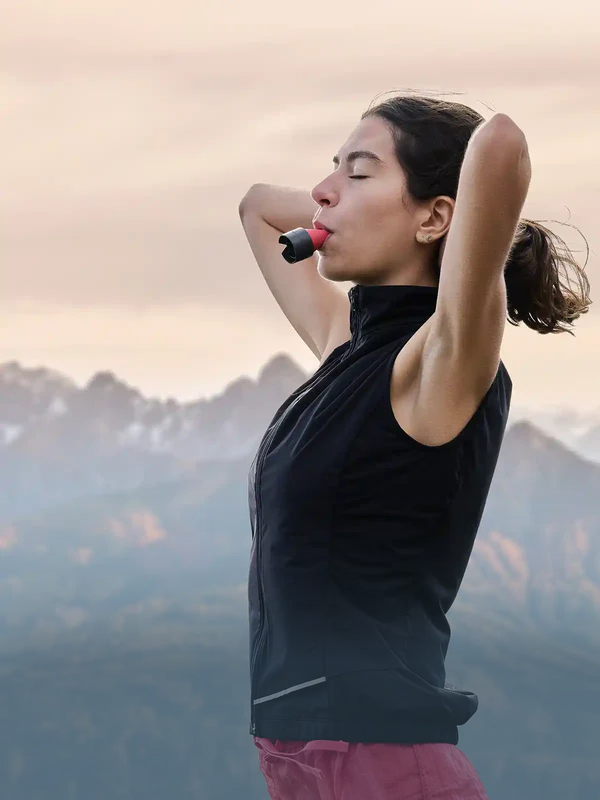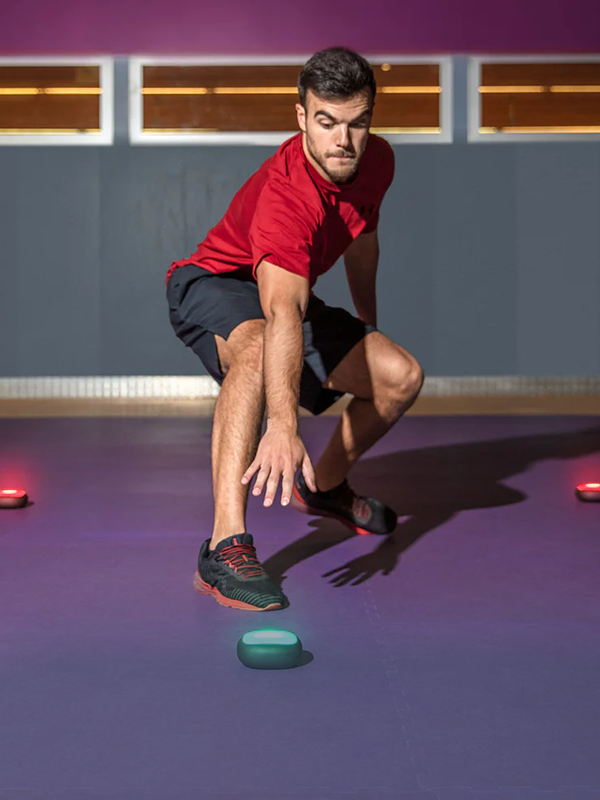Reading time: 5 minutes
Whether it's a computer, cell phone or tablet - we often spend hours staring at different screens, often several at the same time. This behavior can quickly overwhelm our brain and body and have unpleasant consequences, such as headaches. The right neuroathletic exercises can help. We'll give you five simple tips for headaches in the office.
Contents
How do headaches arise?
One of the main causes of headaches in everyday life is overstrain of the eye muscles , also known as computer vision syndrome or office eye syndrome. It occurs when we look at the monitor for hours without changing our direction of gaze. Natural vision usually means tilting the head slightly and lowering the eyelids when we look at things close up. Staring straight ahead strains our eyes and requires increased energy consumption.
If you use multiple screens that require different viewing angles, your eyes have to work even harder. This can cause the visual system to become tired and try to shift the load to other parts of the body. This results in tense muscles, for example in the neck or jaw.
Incorrect posture and stress promote headaches
If the eyes are overstrained, the field of vision often becomes blurred. This is why many people sit at their desks leaning forward. This undynamic posture can also cause tension, for example in the neck , shoulders or head area . In addition, the forward lean prevents economical breathing and thus oxygen supply. The body then often reacts with tension headaches that feel oppressive and constricting.
Stress, caused by constantly switching between many to-dos and the never-ending flood of information, can also cause muscle tension and headaches. These can lead to various physical problems , including nausea, vomiting, sensitivity to light and noise, and impairment of our ability to think.
The Role of the Brain in Headaches
If severe headaches are left untreated for a long time, they can become chronic problems that significantly reduce the quality of life. Our brain plays a crucial role in this. There are different types of headaches that can be caused by different mechanisms in our brain. Migraines, for example, are caused by increased activity in certain areas of the brain.
>> Reading tip: 3 neuroathletic exercises for migraines
Our nervous system also influences how we perceive and deal with pain. When pain signals from affected areas such as the muscles or blood vessels in the head reach our brain, they are interpreted and processed there. This affects the intensity and duration of the headache . Psychological factors such as anxiety or stress also contribute to how strongly we perceive the pain.
More relaxation: 5 exercises to combat headaches
But how can you get rid of annoying tension headaches? To answer this question, we asked Luise Walther, an expert in neurotraining. She tells us 5 effective tips for a more relaxed working life with less pain:
1. Take screen breaks
Constantly staring at screens tires our eyes. Give them a break during your working day by looking into the distance for 20 seconds every 20 minutes. You can also relax your eyes with the following exercise:
Palming
To relax your eyes, close them and place both hands over your eyes. Breathe in and out evenly and deeply through your nose and hold this position until you no longer see any flashes or splashes of color, but can perceive a completely black image.
2. Incorporate exercise into your daily office routine
With short breaks in movement , you mobilize tense muscles and bring new oxygen into your body:
Walk and Talk
Stand in front of the arrow board with your arms stretched out in front of you. Now follow the direction of the arrow with your arms: arrow up, both arms up. arrow down, both arms down. arrow right, right arm right and arrow left, left arm left.
3. Stress management
Stress can be reduced through good workplace management . Try these tips, for example:
- Avoid multitasking wherever possible. If you are working on important projects on the screen, turn off your phone and put it away.
- Only check your emails at set times and deal with them immediately.
- Your desk should only ever contain the documents you need for your current task.
Cervical and thoracic spine mobilization with green glasses
Stand with your feet shoulder-width apart and (optionally) put on your green colored glasses . Press your palms together, breathe in deeply and rotate your arms and head in opposite directions as you breathe out. Return to the center as you breathe in. Rotate in opposite directions again as you breathe out and return to the center as you breathe in. Now pull both hands apart, breathe in deeply again and repeat the exercise sequence. The green glasses can also reduce your muscle tone and have a neutralizing, calming and balancing effect.
4. Relaxation techniques
A high workload and a tense posture can affect our breathing. During these phases, we often breathe shallowly and briefly and do not supply our body with enough oxygen. Small breathing breaks are therefore a useful companion for your everyday work:
breathing belt
Fasten the breathing belt around your stomach just below your ribs with slight resistance. Breathe in and out in a relaxed manner against the resistance of the breathing belt for at least two to five minutes.
5. Eye training
Our eyes are also controlled by muscles that can become tense. You can train your eyes with this exercise:
Eye mobilization with arrow board
Stand in front of the arrow board . Move your eyes in the direction of the arrow without moving your head: arrow up, eyes up. Arrow to the right, eyes to the right, arrow down, eyes down, arrow to the left, eyes to the left. Stop when it becomes tiring for your eyes.
Conclusion: Simple exercises can help with headaches
Long screen times and stress can overtax your eye muscles and cause tension in your neck and back . But with the right relaxation exercises and targeted neurotraining, you can actively counteract this. And this is regardless of how sporty you are. With regular eye exercises , conscious breaks and exercise in everyday life - especially as a short break from screen time - you can relieve the strain on your nervous system, for example. This can help you reduce pain.
It doesn't always have to be a big sport or training session, even small exercises help. So: consciously treat yourself to more exercise and relaxation more often - your eye muscles and your body will thank you!



